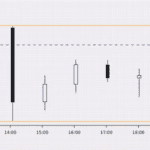Introduction to Fundamental Analysis: Key Economic Indicators
Fundamental analysis is a powerful tool used by investors to evaluate the intrinsic value of an asset, particularly stocks, by examining related economic and financial factors. Unlike technical analysis, which focuses on price movements and trends, fundamental analysis considers economic indicators, financial statements, and industry conditions to determine whether an asset is overvalued or undervalued. In this post, we’ll explore some of the key economic indicators that serve as the foundation for fundamental analysis.
What Are Economic Indicators?
Economic indicators are data points that provide insight into the overall health of an economy. They are categorized into three main types:
- Leading Indicators: These indicators predict future economic activity. Examples include stock market performance, new business startups, and consumer confidence indices.
- Lagging Indicators: These indicators confirm trends after they have already begun. Examples include unemployment rates and corporate profits.
- Coincident Indicators: These indicators move in real-time with the economy and help measure its current state. Examples include GDP and industrial production.
Key Economic Indicators for Fundamental Analysis
1. Gross Domestic Product (GDP)
GDP measures the total value of goods and services produced within a country over a specific period. A growing GDP signals economic expansion, while a declining GDP may indicate a recession. Investors monitor GDP to assess overall market conditions.
2. Unemployment Rate
The unemployment rate measures the percentage of the workforce that is jobless but actively seeking employment. High unemployment suggests economic distress, while low unemployment indicates a strong job market and consumer spending power.
3. Inflation Rate (CPI and PPI)
Inflation measures the rise in prices of goods and services over time. The Consumer Price Index (CPI) tracks changes in retail prices, while the Producer Price Index (PPI) measures the cost of goods at the wholesale level. Moderate inflation is healthy, but excessive inflation can erode purchasing power and hurt corporate profits.
4. Interest Rates
Central banks, such as the Federal Reserve, set interest rates to control inflation and stabilize the economy. Lower interest rates encourage borrowing and investment, while higher rates may slow economic growth. Investors watch interest rate decisions closely as they impact stock and bond markets.
5. Consumer Confidence Index (CCI)
The CCI measures consumer sentiment about current and future economic conditions. When consumers feel optimistic, they spend more, driving business growth and economic expansion. A declining CCI suggests lower spending, which can hurt corporate earnings.
6. Corporate Earnings Reports
Public companies release earnings reports quarterly, detailing revenue, expenses, and profitability. Investors analyze these reports to assess a company’s financial health and growth potential. Strong earnings often drive stock prices higher, while weak earnings can lead to sell-offs.
7. Trade Balance
The trade balance reflects the difference between a country’s exports and imports. A trade surplus (more exports than imports) signals a strong economy, while a trade deficit may indicate reliance on foreign goods and potential economic challenges.
8. Housing Market Data
Housing market indicators, such as housing starts, new home sales, and mortgage rates, provide insight into economic stability. A strong housing market suggests consumer confidence and economic growth, while a declining market may signal trouble ahead.
Conclusion
Understanding key economic indicators is crucial for investors conducting fundamental analysis. Investors can make informed decisions about stocks, bonds, and other assets by analyzing these indicators. Whether you’re a beginner or an experienced investor, staying informed about economic trends can help you navigate the markets more effectively.



